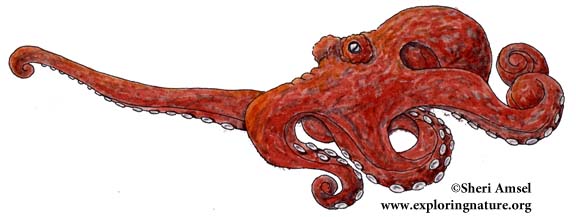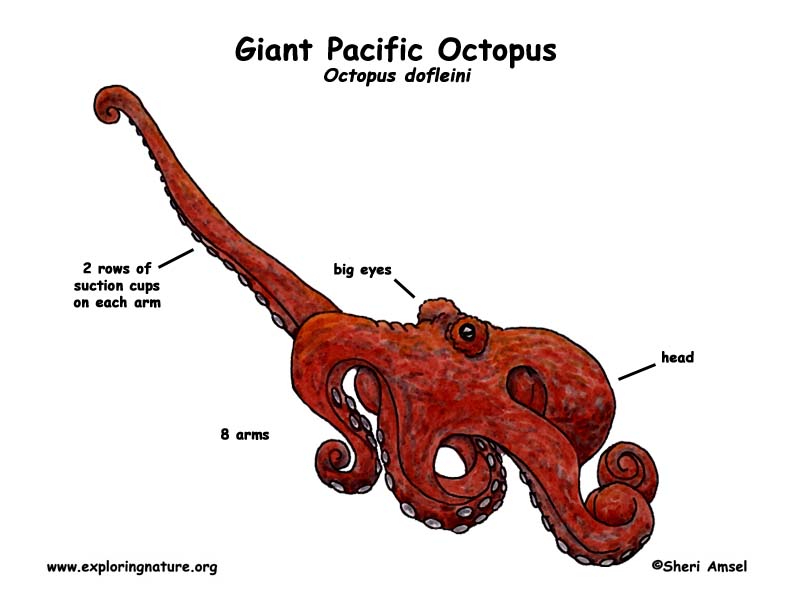

They are found in the northern Pacific Ocean from Alaska south to southern California and across the Pacific to Japan.
They live on the ocean floor.
They are reddish-brown with eight arms and 2 rows of suction cups lining the bottom side of each. They can change color when they are excited and to blend in. They weigh about 75 pounds, though some much larger have been found on occasion. They have no skeleton, so can squeeze through very small spaces. They do have a hard beak that they use to drill through shells to get at the soft body of their prey.
The octopus can crawl along the ocean floor on their arms or swim by shooting water out of their bodies to move forward. They can squirt ink to escape attack by a predator. They can be eaten by other octopuses, fish, sharks, and dolphins.
They eat crabs, clams, scallops, snails, fish and other octopuses. The octopus uses its sharp beak to kill, and break prey apart for eating. They can send out a toxin that will stun prey and begins to break them down to they can be eaten.
Females lay up to 100,000 eggs in a rock den. She cleans and blows air over her eggs until they hatch in 5 -7 months. After they hatch the female dies. Baby octopuses are as tiny as a sunflower seed.
Kingdom: Animalia
Phylum: Mollusca
Class: Cephalopoda
Order: Octopoda
Family: Octopodidae
Genus: Enteroctopus
Species: E. dofleini
When you research information you must cite the reference. Citing for websites is different from citing from books, magazines and periodicals. The style of citing shown here is from the MLA Style Citations (Modern Language Association).
When citing a WEBSITE the general format is as follows.
Author Last Name, First Name(s). "Title: Subtitle of Part of Web Page, if appropriate." Title: Subtitle: Section of Page if appropriate. Sponsoring/Publishing Agency, If Given. Additional significant descriptive information. Date of Electronic Publication or other Date, such as Last Updated. Day Month Year of access < URL >.
Amsel, Sheri. "Octopus (Giant Pacific)" Exploring Nature Educational Resource ©2005-2024. December 13, 2024
< http://mail.exploringnature.org/db/view/571 >

